2020-04-02 - Nº 257
Editorial
Esta é a Newsletter Nº 257 que se apresenta com o mesmo formato que as anteriores. Se gostar da Newsletter partilhe-a!
Todas as Newsletters encontram-se indexadas no link.
Esta Newsletter tem os seguintes tópicos:
Faz hoje anos que nascia, em 1875 o inventor norte-americano Walter Chrysler. Ele começou na adolescência a trabalhar no sector ferroviário tendo subido a cargos de gerência. Então, em 1912, Charles W. Nash recrutou-o como gerente da divisão de produção da Buick da General Motors. Chrysler reorganizou a produção para obter eficiência, aumentando a produção e os lucros, mas renunciou em 1920. Ele resgatou a empresa de automóveis Willys-Overland da falência e depois transformou a Maxwell Motor Company na Chrysler Corporation (1924), que produziu o primeiro carro da Chrysler em Junho de 1925. A empresa cresceu tornar-se um dos "Três Grandes" fabricantes de automóveis.
Faz também hoje anos que nascia, em 1878, o matemático norte-americano Edward Kasner. Ele foi responsável pela introdução da palavra googol para um número muito grande (10 elevado ao poder 100, que é 1 seguido de 100 zeros) com o nome inventado por seu sobrinho de 9 anos. Foi introduzida no livro não técnico de matemática que ele co-escreveu com James R. Newman, Matemática e Imaginação.
Por fim, faz anos hoje que nascia, em 1934, o matemático norte-americano Paul Cohen. Ele ficou conhecido pelo seu trabalho fundamental sobre os fundamentos da teoria dos conjuntos. Cohen inventou uma técnica chamada "forçar" para provar a independência na teoria dos conjuntos do axioma da escolha e da hipótese do continuum generalizado. O problema da hipótese do continuum foi o primeiro dos 23 famosos problemas de Hilbert entregues ao Segundo Congresso Internacional de Matemáticos em Paris em 1900. O famoso discurso de Hilbert Os problemas da matemática desafiaram (então e agora) os matemáticos a resolver essas questões fundamentais e Cohen tem a distinção de Resolvendo o Problema 1. Ele também trabalhou em equações diferenciais e análise harmónica. Foi reconhecido com a medalha Fields em 1966.
Nesta semana que passou foi lançada a versão final do Kernel 5.6 do Linux. De entre as várias novidades destaca-se a integração com o WireGuard VPN. Também está nesta versão o suporte inicial para o USB4 cujo contributo foi dado pela Intel. Este Kernel é também o primeiro a endereçar em 32-bits o problema do ano 2038 (overflow de segundos em 32-bits). Foram feitas muitas alterações no driver de suporte de monitorização de temperatura dos AMDs nomeadamente o suporte para os CPUs ZEN. Foi finalmente incorporado no kernel o VirtualBox Shared Folder driver para melhorar o suporte de sistemas Linux guest out-of-the-box.
Na Newsletter desta semana apresentamos diversos artigos científicos assim como projetos de maker.
 João Alves ([email protected])
João Alves ([email protected])
O conteúdo da Newsletter encontra-se sob a licença  Creative Commons Attribution-NonCommercial-ShareAlike 4.0 International License.
Creative Commons Attribution-NonCommercial-ShareAlike 4.0 International License.
Novidades da Semana

Linux Kernel 5.6 Officially Released
"Linus Torvalds has announced the Linux kernel 5.6 with highly anticipated improvements including support for WireGuard VPN. Torvalds says in the official announcement that the development of the next kernel update is unlikely to be impacted substantially by the new coronavirus outbreak, as most engineers are typically working from home anyway. However, he does admit that a slowdown is expected due to social distancing and the pandemic. “And while I haven't really seen any real sign of kernel development being impacted by all the coronavirus activity - I suspect a lot of us work from home even normally, and my daughter laughed at me and called me a "social distancing champ" the other day - it may be worth just mentioning: I think we're all reading the news and slightly distracted,” Torvalds said. “I'm currently going by the assumption that we'll have a fairly normal 5.7 release, and there doesn't seem to be any signs saying otherwise, but hey, people may have better-than-usual reasons for missing the merge window. Let me know if you know of some subsystem that ends up being affected.” What’s new in Linux kernel 5.6 As for what’s new in this fresh release, there’s no doubt the main highlight is the addition of WireGuard VPN support, which is pretty good news for everyone who wants to switch from IPsec." [...]
Outras Notícias
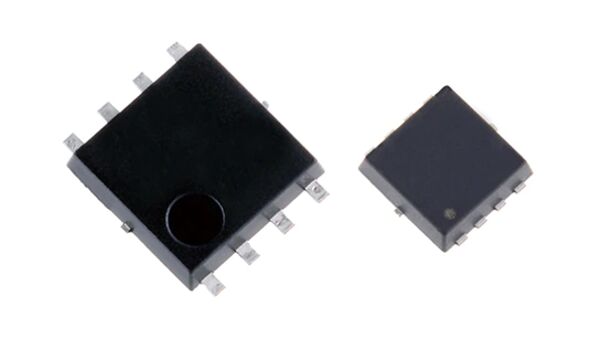
Toshiba’s 80V N-channel Power MOSFETs Fabricated with Latest Generation Process Help Improve Power Supply Efficiency
"Toshiba Electronic Devices & Storage Corporation (“Toshiba”) has added 80V N-channel power MOSFETs to its “U-MOS X-H series” fabricated with the latest generation process. The new MOSFETs are suitable for switching power supplies in industrial equipment used in data centers and communication base stations. The expanded line-up includes "TPH2R408QM," housed in SOP Advance, a surface-mount type packaging, and "TPN19008QM," housed in a TSON Advance package. Shipments starts today. Drain-source On-resistance in the new 80V U-MOS X-H products, manufactured with the latest generation process, is approximately 40% lower than that of 80V products in the current generation process U-MOS Ⅷ-H series products. The trade-off between the drain-source On-resistance and the gate charge characteristics[1] has also been improved[2] by optimizing device structure." [...]

STMicroelectronics Simplifies Power for Smart Devices with Flexible and Rugged VIPer® Controller
"STMicroelectronics’ VIPer222 controller for high-voltage converters up to 8W brings small size, low cost, and versatility to applications such as home appliances, building-automation devices, smart lighting, and smart meters. With integrated features including an error amplifier, current-sensing MOSFET, and high-voltage startup circuitry, the VIPer222 can be used in a wide variety of popular converter topologies. These include non-isolated flyback converters, isolated flyback converters with primary-side regulation or secondary-side regulation using a photo-coupler, buck converters, and buck-boost converters. The VIPer222 is the first in ST’s highly integrated controller family to contain a 730V avalanche-rugged power stage, ensuring superior reliability. Short-circuit protection, thermal protection, pulse skipping protection, soft start, and circuitry to manage burst-mode operation for enhanced efficiency at light load are also provided. Further features minimize external BoM and simplify converter design." [...]

10th Gen Intel Core H-series Introduces the World’s Fastest Mobile Processor at 5.3 GHz
"Today, Intel breaks beyond the 5 GHz barrier for laptops with the launch of the 10th Gen Intel® Core™ H-series mobile processors. Headlined by the 10th Gen Intel Core i9-10980HK1 processor, the H-series delivers desktop-caliber performance that gamers and creators can take anywhere. “Today’s introduction of the 10th Gen Intel Core H-series mobile platform extends Intel’s gaming leadership, delivering desktop-caliber performance in a mobile form factor and breadth of choice with more than 100 laptop designs launching this year, including more than 30 thin-and-light systems. The new platform is optimized for enthusiasts and creators by delivering the fastest frequency in the industry with 5 GHz across the majority of the volume which will deliver amazing game play and rich creation for users.” –Fredrik Hamberger, general manager of the premium and gaming laptop segments at Intel Why It’s Important: Gamers are moving increasingly toward mobile systems and they care about the flexibility of gaming where they want to as much as they do the raw performance of their systems, ranking processor speed in their top three most important features. Packed with incredible performance typically only available from desktops, 10th Gen Intel Core laptop processors deliver faster performance with up to 5.3 GHz3 Turbo, eight cores and 16 threads to enable immersive gaming experiences with amazing responsiveness and consistent in-game performance. Games and applications continue to depend on high-frequency cores and Intel is pushing the frequency envelope to achieve lower latency and deliver the best PC gaming experience on a laptop." [...]
Ciência e Tecnologia
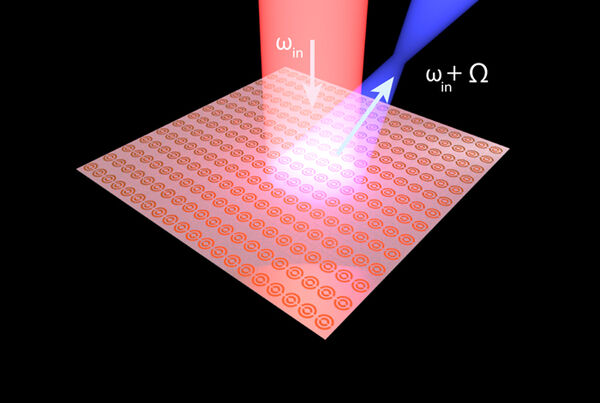
Flat-panel technology could transform antennas, wireless and cell phone communications
"Electronically controlled 2-D reflector promises improved microwave communications, beam steering without moving pieces, and one-way microwave mirrors Researchers at Los Alamos National Laboratory are reinventing the mirror, at least for microwaves, potentially replacing the familiar 3-D dishes and microwave horns we see on rooftops and cell towers with flat panels that are compact, versatile, and better adapted for modern communication technologies. “Our new reflectors offer lightweight, low-profile alternatives to conventional antennas. This is a potential boon for satellites, where minimizing weight and size is crucial,” said Abul Azad, of the MPA-CINT group at Los Alamos National Laboratory. “The panels could be easily incorporated onto surfaces of buildings or terrestrial vehicles as well.” Most reflectors are reciprocal: in the case of a bathroom mirror, for example, if you can see someone reflected in it, they can see you too. The new reflector design breaks reciprocity, effectively turning it into a one-way mirror. The flat-panel reflector can be controlled electronically, which means its characteristics can be reconfigured on the fly." [...]
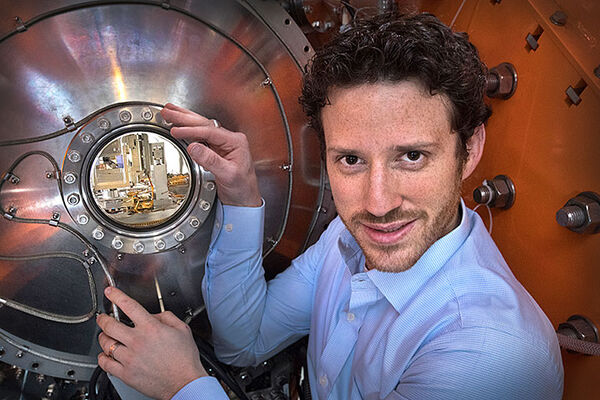
Quantum Effect Triggers Unusual Material Expansion
"You know how you leave space in a water bottle before you pop it in the freezer—to accommodate the fact that water expands as it freezes? Most metal parts in airplanes face the more common opposite problem. At high altitudes (low temperatures) they shrink. To keep such shrinkage from causing major disasters, engineers make airplanes out of composites or alloys, mixing materials that have opposite expansion properties to balance one another out. New research conducted in part at the U.S. Department of Energy’s Brookhaven National Laboratory may bring a whole new class of chemical elements into this materials science balancing act. As described in a paper just published in the journal Physical Review Letters, scientists used x-rays at Brookhaven’s National Synchrotron Light Source II (NSLS-II)—a U.S. Department of Energy Office of Science user facility—and two other synchrotron light sources to explore an unusual metal that expands dramatically at low temperature." [...]
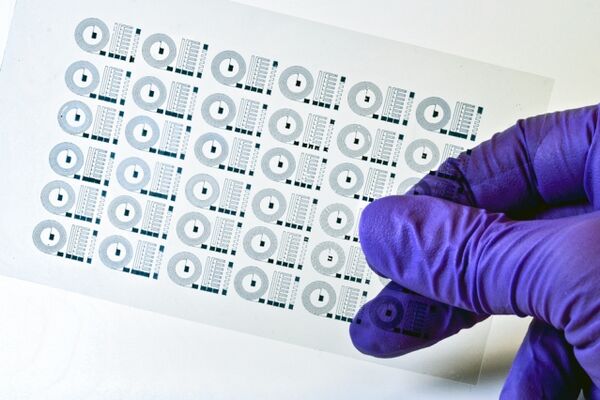
Engineers 3D print soft, rubbery brain implants
"Technique may enable speedy, on-demand design of softer, safer neural devices. The brain is one of our most vulnerable organs, as soft as the softest tofu. Brain implants, on the other hand, are typically made from metal and other rigid materials that over time can cause inflammation and the buildup of scar tissue. MIT engineers are working on developing soft, flexible neural implants that can gently conform to the brain’s contours and monitor activity over longer periods, without aggravating surrounding tissue. Such flexible electronics could be softer alternatives to existing metal-based electrodes designed to monitor brain activity, and may also be useful in brain implants that stimulate neural regions to ease symptoms of epilepsy, Parkinson’s disease, and severe depression. Led by Xuanhe Zhao, a professor of mechanical engineering and of civil and environmental engineering, the research team has now developed a way to 3D print neural probes and other electronic devices that are as soft and flexible as rubber." [...]
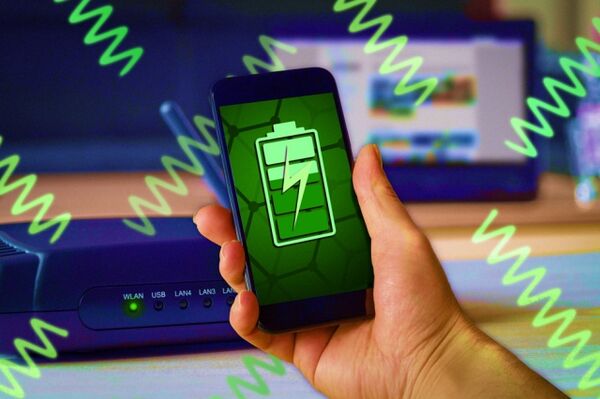
Energy-harvesting design aims to turn Wi-Fi signals into usable power
"Device for harnessing terahertz radiation might enable self-powering implants, cellphones, other portable electronics. Any device that sends out a Wi-Fi signal also emits terahertz waves —electromagnetic waves with a frequency somewhere between microwaves and infrared light. These high-frequency radiation waves, known as “T-rays,” are also produced by almost anything that registers a temperature, including our own bodies and the inanimate objects around us. Terahertz waves are pervasive in our daily lives, and if harnessed, their concentrated power could potentially serve as an alternate energy source. Imagine, for instance, a cellphone add-on that passively soaks up ambient T-rays and uses their energy to charge your phone. However, to date, terahertz waves are wasted energy, as there has been no practical way to capture and convert them into any usable form." [...]
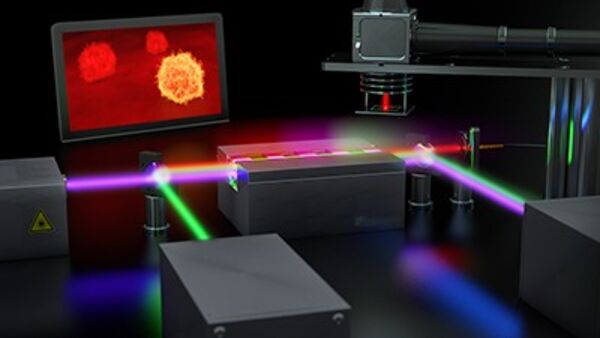
Making the invisible visible
"Entangled photons can be used to improve imaging and measurement techniques. A team of researchers from the Fraunhofer Institute for Applied Optics and Precision Engineering IOF in Jena has developed a quantum imaging solution that can facilitate highly detailed insights into tissue samples using extreme spectral ranges and less light. While optical analysis techniques such as microscopy and spectroscopy are extremely efficient in visible wavelength ranges, they quickly reach their limits in the infrared or terahertz range. That, however, is precisely where valuable information is hidden. For example, bio-substances such as proteins, lipids and other biochemical components can be distinguished based on their characteristic molecular vibrations. These vibrations are stimulated by light in the mid-infrared to terahertz range and are very difficult to detect with conventional measurement techniques." [...]
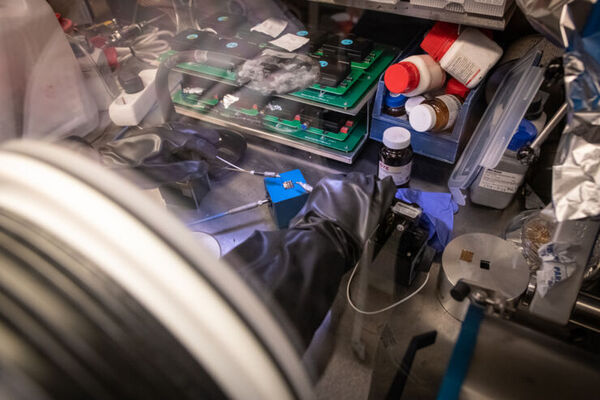
Stable perovskite LEDs one step closer
"Researchers at Linköping University, working with colleagues in Great Britain, China and the Czech Republic, have developed a perovskite light-emitting diode (LED) with both high efficiency and long operational stability. “Light-emitting diodes based on perovskites are still not sufficiently stable for practical use, but we have brought them one step closer”, says professor Feng Gao, and head of research at the Division of Biomolecular and Organic Electronics, Linköping University. Perovskites are a large family of semiconducting materials that have aroused the interest of scientists around the world. Their special crystal structure means that they have excellent optical and electronic properties, while they are both easy and cheap to manufacture. Most progress has been made in research into the use of perovskites in solar cells, but they are also well-suited for the manufacture of LEDs. The efficiency of the LEDs, which measures the fraction of charge carriers input to the material that are subsequently emitted as light, has increased considerably in recent years, and will soon reach that of competing technology." [...]

Does relativity lie at the source of quantum exoticism?
"Since its beginnings, quantum mechanics hasn’t ceased to amaze us with its peculiarity, so difficult to understand. Why does one particle seem to pass through two slits simultaneously? Why instead of specific predictions can we only talk about evolution of probabilities? According to theorists from universities in Warsaw and Oxford, the most important features of the quantum world may result from the special theory of relativity, which until now seemed to have little to do with quantum mechanics. Since the arrival of quantum mechanics and the theory of relativity, physicists have lost sleep over the incompatibility of these three concepts (three, since there are two theories of relativity: special and general). It has commonly been accepted that it is the description of quantum mechanics that is the more fundamental and that the theory of relativity that will have to be adjusted to it." [...]
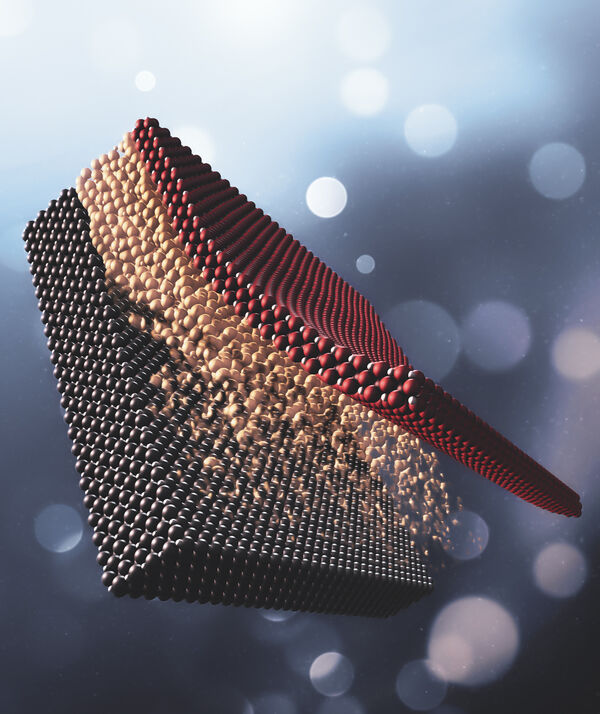
A new way to fine-tune exotic materials: Thin, stretch and clamp
"Turning a brittle oxide into a flexible membrane and stretching it on a tiny apparatus flipped it from a conducting to an insulating state and changed its magnetic properties. The technique can be used to study and design a broad range of materials for use in things like sensors and detectors. One way to change the properties of a material is to stretch it just a wee bit, so its atoms are farther apart but the bonds between them don’t break. This extra distance affects the behavior of electrons, which determine whether the material is an insulator or a conductor of electricity, for instance. But for an important class of complex oxide materials, stretching doesn’t work so well; they’re as brittle as ceramic coffee cups and would break. Scientists at the Department of Energy’s SLAC National Accelerator Laboratory and Stanford University have now found a way around this problem for a complex oxide known as LCMO." [...]
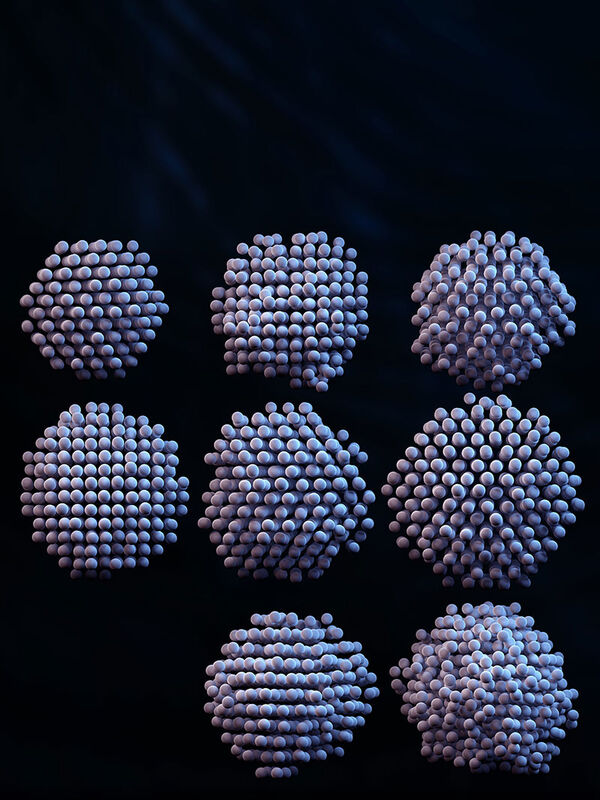
3D Reconstructions of Individual Nanoparticles
"Liquid phase electron microscopy illuminates 3D atomic structures of platinum nanoparticles, advancing full control of nanoengineering. What do you see in the picture above (Figure 1)? Merely a precisely-drawn three-dimensional picture of nanoparticles? Far more than that, nanotechnologists will say, due to a new study published in the journal Science. Whether a material catalyzes chemical reactions or impedes any molecular response is all about how its atoms are arranged. The ultimate goal of nanotechnology is centered around the ability to design and build materials atom by atom, thus allowing scientists to control their properties in any given scenario." [...]
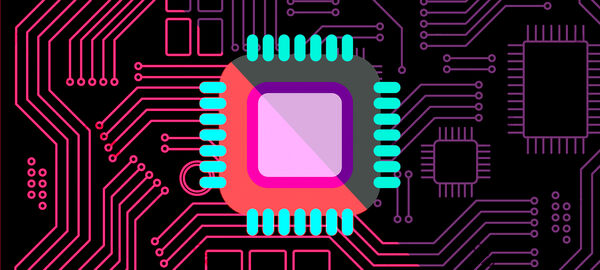
Programming around Moore’s Law with automatic code translation
"Most programs in use today have to be completely rewritten at a very low level to reap the benefits of hardware acceleration. This system demonstrates how to make that translation automatic. A new technique developed by researchers at the University of Michigan could enable broader adoption of post-Moore’s Law computing components through automatic code translation. The system, called AutomataSynth, allows software engineers to tap into the power of hardware accelerators like FPGAs without specialized programming knowledge or needing to rewrite old, CPU-centric code. With Moore’s Law nearing its end, companies and designers rely on a number of hardware techniques to circumvent the diminishing returns provided by new CPUs. Among the most viable short-term candidates have been hardware accelerators like field-programmable gate arrays (FPGAs), which can be dedicated to rapidly executing particular common functions and eliminating bottlenecks in larger applications." [...]
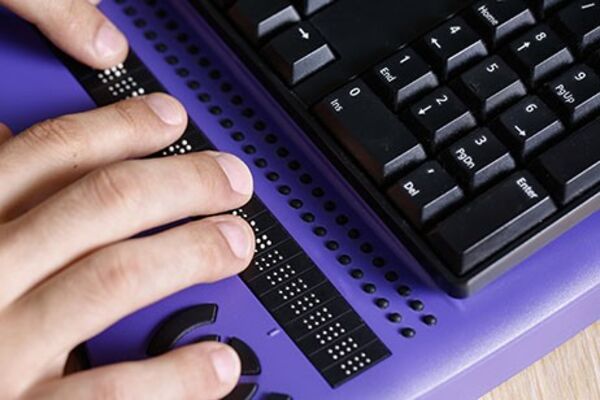
New electrically activated material could improve braille readers
"Refreshable braille displays translate information from computer screens into raised characters, often along the bottom of a keyboard. But this technology can cost thousands of dollars and is limited, typically displaying a string of characters much shorter than most sentences. Researchers now report an improved material that could take these displays to the next level, allowing those who are blind or who have low vision to more easily understand text and images, while lowering cost. The researchers are presenting their results through the American Chemical Society (ACS) SciMeetings online platform. “With more development, we think this new material’s properties could make it possible to create much higher resolution devices, perhaps even those capable of displaying information other than text, such as diagrams or maps,” says Julia R. Greer, Ph.D., the project’s principal investigator. Braille displays currently on the market rely on the piezoelectric effect: A small crystal expands when voltage is applied to it, pushing a pin upward to create a dot." [...]

Physicist from Hannover Develops New Photon Source for Tap-proof Communication
"An international team with the participation of Prof. Dr. Michael Kues from the Cluster of Excellence PhoenixD at Leibniz University Hannover has developed a new method for generating quantum-entangled photons in a spectral range of light that was previously inaccessible. The discovery can make the encryption of satellite-based communications much more secure in the future. A 15-member research team from the UK, Germany and Japan has developed a new method for generating and detecting quantum-entangled photons at a wavelength of 2.1 micrometres. In practice, entangled photons are used in encryption methods such as quantum key distribution to completely secure telecommunications between two partners against eavesdropping attempts. The research results are presented to the public for the first time in the current issue of "Science Advances". Until now, it has been only technically possible to implement such encryption mechanisms with entangled photons in the near-infrared range of 700 to 1550 nanometers." [...]

Extreme High-Frequency Signals Enable Terabits-Per-Second Data Links
"Using the same technology that allows high-frequency signals to travel on regular phone lines, researchers tested sending extremely high-frequency, 200 GHz signals through a pair of copper wires. The result is a link that can move data at rates of terabits per second, significantly faster than currently available channels. While the technology to disentangle multiple, parallel signals moving through a channel already exists, thanks to signal processing methods developed by John Cioffi, the inventor of digital subscriber lines, or DSL, questions remained related to the effectiveness of implementing these ideas at higher frequencies. To test the transmission of data at higher frequencies, authors of a paper published this week in Applied Physics Letters, from AIP Publishing, used experimental measurements and mathematical modeling to characterize the input and output signals in a waveguide. They used a device with two wires running parallel inside a sheath with a large diameter that facilitates increased mixing of the waveguide modes. These mixtures enable the transmission of parallel noninterfering data channels." [...]
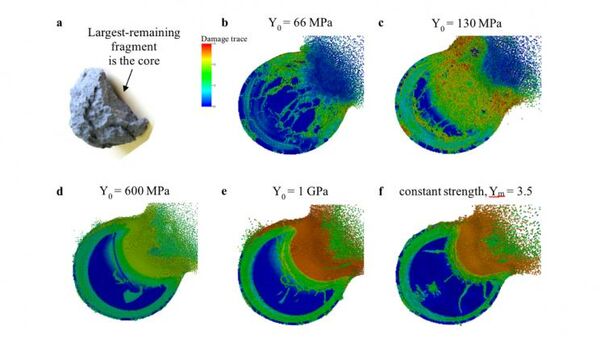
Planetary defenders validate asteroid deflection code
"Planetary defense researchers at Lawrence Livermore National Laboratory (LLNL) continue to validate their ability to accurately simulate how they might deflect an Earth-bound asteroid in a study that will be published in the April issue of the American Geophysical Union journal Earth and Space Science. The study, led by LLNL physicist Tané Remington, also identified sensitivities in the code parameters that can help researchers working to design a modeling plan for the Double Asteroid Redirection Test (DART) mission in 2021, which will be the first-ever kinetic impact deflection demonstration on a near-Earth asteroid. Asteroids have the potential to impact Earth and cause damage at the local to global scale. Humankind is capable of deflecting or disrupting a potentially hazardous object. However, due to the limited ability to perform experiments directly on asteroids, understanding how multiple variables might affect a kinetic deflection attempt relies upon large-scale hydrodynamic simulations thoroughly vetted against relevant laboratory‐scale experiments. “We’re preparing for something that has a very low probability of happening in our lifetimes, but a very high consequence if it were to occur,” Remington said." [...]
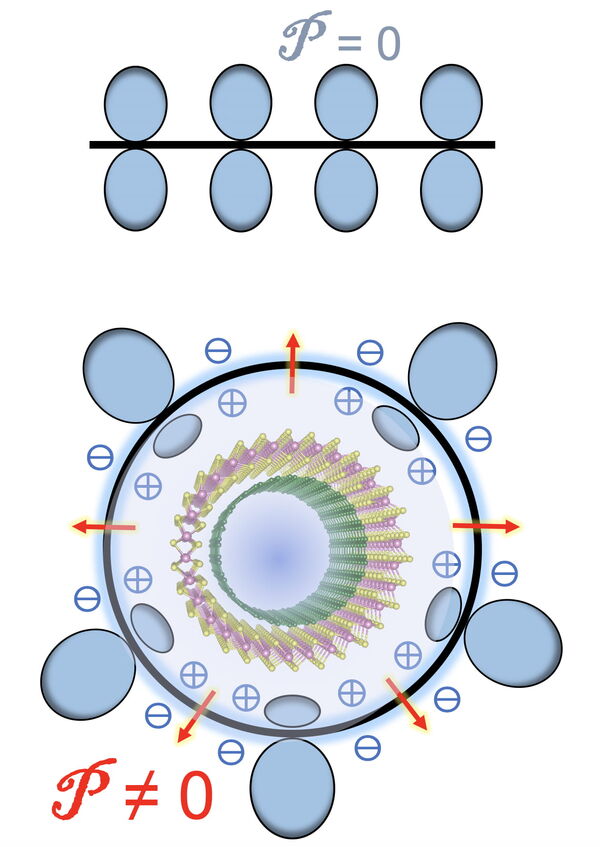
Double-walled nanotubes have electro-optical advantages
"Rice University calculations show they could be highly useful for solar panels One nanotube could be great for electronics applications, but there’s new evidence that two could be tops. Rice University engineers already knew that size matters when using single-walled carbon nanotubes for their electrical properties. But until now, nobody had studied how electrons act when confronted with the Russian doll-like structure of multiwalled tubes. The Rice lab of materials theorist Boris Yakobson has now calculated the impact of curvature of semiconducting double-wall carbon nanotubes on their flexoelectric voltage, a measure of electrical imbalance between the nanotube’s inner and outer walls. This affects how suitable nested nanotube pairs may be for nanoelectronics applications, especially photovoltaics. The theoretical research by Yakobson’s Brown School of Engineering group appears in the American Chemical Society journal Nano Letters." [...]

Recipe for Neuromorphic Processing Systems?
"During the 1990s, Carver Mead and colleagues combined basic research in neuroscience with elegant analog circuit design in electronic engineering. This pioneering work on neuromorphic electronic circuits inspired researchers in Germany and Switzerland to explore the possibility of reproducing the physics of real neural circuits by using the physics of silicon. The field of “brain-mimicking” neuromorphic electronics shows great potential not only for basic research but also for commercial exploitation of always-on edge computing and “internet of things” applications. In Applied Physics Letters, from AIP Publishing, Elisabetta Chicca, from Bielefeld University, and Giacomo Indiveri, from the University of Zurich and ETH Zurich, present their work to understand how neural processing systems in biology carry out computation, as well as a recipe to reproduce these computing principles in mixed signal analog/digital electronics and novel materials. One of the most distinctive computational features of neural networks is learning, so Chicca and Indiveri are particularly interested in reproducing the adaptive and plastic properties of real synapses. They used both standard complementary metal-oxide semiconductor (CMOS) electronic circuits and advanced nanoscale memory technologies, such as memristive devices, to build intelligent systems that can learn." [...]

To Tune Up Your Quantum Computer, Better Call an AI Mechanic
"A high-end race car engine needs all its components tuned and working together precisely to deliver top-quality performance. The same can be said about the processor inside a quantum computer, whose delicate bits must be adjusted in just the right way before it can perform a calculation. Who’s the right mechanic for this quantum tuneup job? According to a team that includes scientists at the National Institute of Standards and Technology (NIST), it’s an artificial intelligence, that’s who. The team’s paper in the journal Physical Review Applied outlines a way to teach an AI to make an interconnected set of adjustments to tiny quantum dots, which are among the many promising devices for creating the quantum bits, or “qubits,” that would form the switches in a quantum computer’s processor. Precisely tweaking the dots is crucial for transforming them into properly functioning qubits, and until now the job had to be done painstakingly by human operators, requiring hours of work to create even a small handful of qubits for a single calculation." [...]
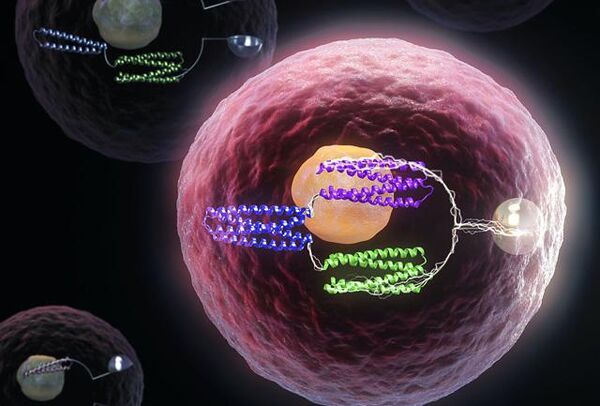
Turning cells into computers with protein logic gates
"The same basic tools that allow computers to function are now being used to control life at the molecular level. The advances have implications for future medicines and synthetic biology. Reporting April 2 in the journal Science, a team led by the University of Washington School of Medicine has created artificial proteins that function as molecular logic gates. These tools, like their electronic counterparts, can be used to program the behavior of more complex systems. The team showed that the new designer proteins can regulate gene expression inside human T-cells. This development may improve the safety and durability of future cell-based therapies." [...]
Projetos Maker
Diversos Projetos interessantes.
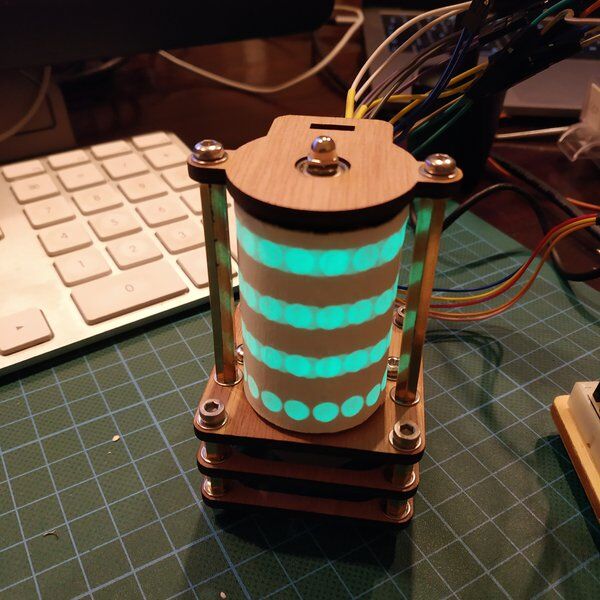
Glixie... A glow in the dark Nixie
"A Nixie tube style display with an array of 7 LED's. Creating a 5x7 character matrix. I really like Nixie clocks (who doesn't?) but I wanted to create my own. And because I don't want to tinker with high voltage and a Lixie has already been done... I created Glixie a glow in the dark Nixie tube." [...]
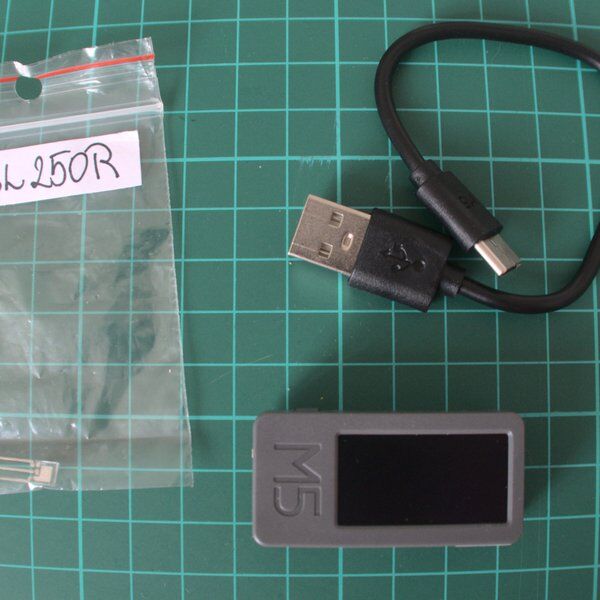
The simple light flicker meter
"This device allow to measure frequency and percentage of flicker of the light source. The basic idea was to create a simple device which allow to compare the quality of light sources e.g. LED bulbs. I have used TSL250R IC containing photodiode and operational amplifier with configured feedback loop. This IC is optical sensor which output voltage is proportional to light intensitivity. I have put this sensor inside to case of M5Stick development board and connected directly to ESP32 module." [...]
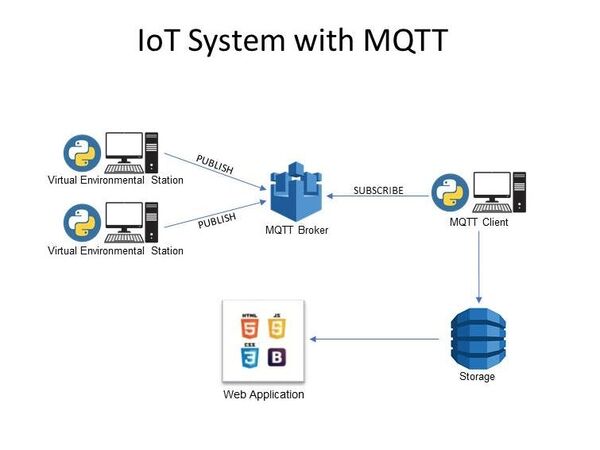
AWS Cloud based IoT system with MQTT
"A cloud-based IoT system that collects information from a set of virtual environmental sensors using the MQTT protocol and AWS IoT Core. I have created a cloud-based IoT system that collects information from a set of virtual environmental sensors using the MQTT protocol, with the AWS IoT technology. I have also implemented a simple web site to display the data collected from the sensors. The system is composed by two Python scripts, which represent two Environmental Station that generate data through the virtual sensors (Temperature, Humidity, WindDirection, WindIntensity and RainHeight). The resulting values are published on a topic over the MQTT channel, as JSON files. From the broker there will be another Python script (in the role of Subscriber) that inserts the received data into the table EnvironmentalStationDB, in the DynamoDB system." [...]
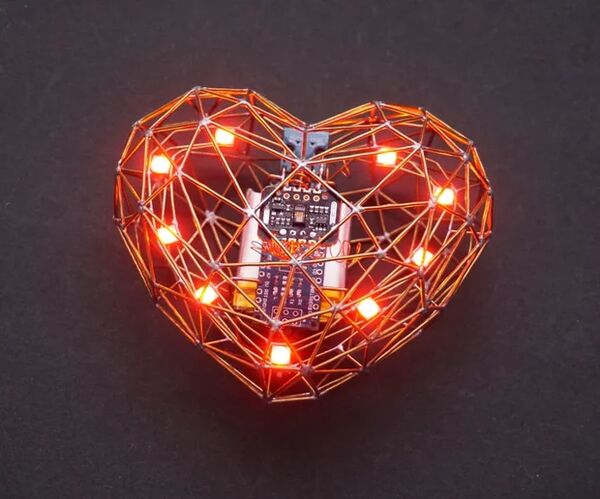
Beating LED Heart
"It's been 5 wonderful years since I married my wife. I am giving her this electronic heart. It can sense the excitement. It beats according to the holder's heartbeat. She's been supporting me on many of my crazy quests. Like all of my creations, I went a bit artistic here and made the heart shape out of brass wire mesh." [...]
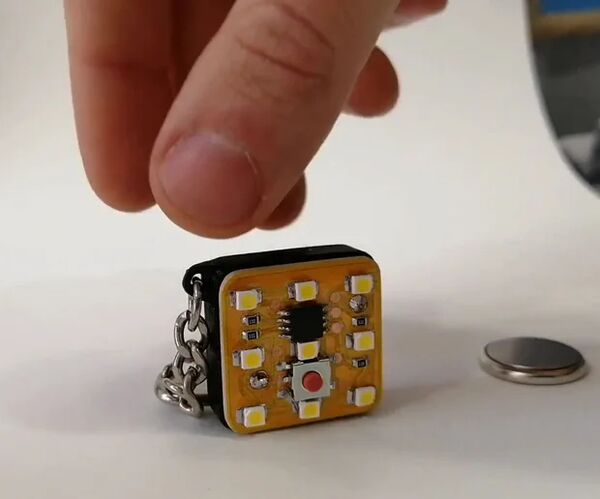
TinyDice: Professional PCBs at Home With Vinyl Cutter
"This instructable consists of a step by step guide documenting a method of manufacturing professional quality PCBs at home through the use of a vinyl cutter, in a reliable, simple and efficient manner. This method allows for the production of consistent and high quality PCBs at home with few common materials and in a very short timespan. With all the files ready, the whole process can be accomplished in a few hours. Subject of the guide, tinyDice: For the purpose of this guide, the process will be illustrated with the production of a batch of 3 tinyDice, an electronic die based on the atTiny85 microcontroller with software charlieplexing, which allows the control of 9 LEDs with only 4 pins and 4 resistors. It is an improved version of my original tinyDice (2014), and all the source files required for this Instructable are available for download as a compressed package on the supplies step. Origin of the method: As an electronics enthusiast, I've had my fair share of experience with making PCBs in the past, but most home methods are either excessively unreliable, like the Toner transfer method, or excessively complex and laborious, like the CNC router method or the UV photoresist method (which I have covered in the past on the original tinyDice)." [...]
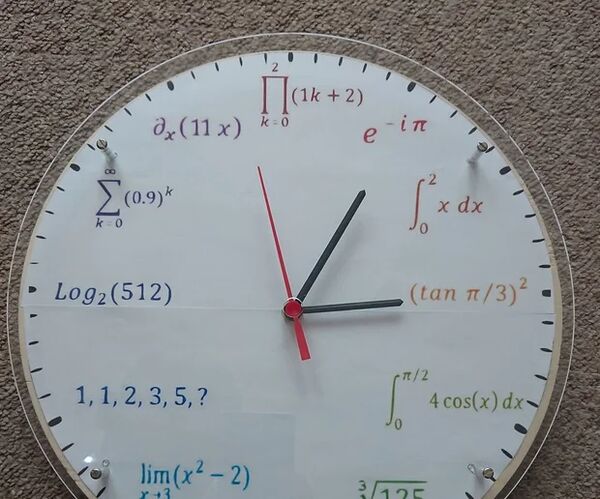
Math-Physics Rainbow Clock
"A while ago I had and idea to create my own Physics/Math clock, so i started to design it in Inkscape . Each hour, from 1 to 12, I replaced with Physics/Math formula: 1 - Euler's equation 2 - Integral 3 - Trigonometric function 4 - Integral of trigonometric function 5 - Cube root 6 - Factorial 7 - Limit 8 - Fibonacci sequence 9 - Logarithm 10 - Summation 11 - Differential 12 - Product operator In addition I decided to color the the hours according to rainbow pattern starting from Red to Purple. Supplies:- Clock mechanism - Double sided tape - 4 x M3 x 30mm bolt with nut - A4 photo paper (or A3 for larger version) - A4 3mm plywood (or A3 for larger version) - A4 3mm clear perspex (or A3 for larger version Tools: - Jigsaw - Drill - Scissors - Screwdriver - Color laser printer - Laser cutter (optional)" [...]

IoT Notifier Using ESP-12E
"Stuck at home away from your loved one? During this difficult time, this fun little project will definitely try to bring a smile to your faces. In this Instructable, I will show you how to display notifications from your mobile phone in the form of animations on the Notifier. Let's get started! Supplies: ESP12E WiFi Module x1 WS2812B LEDs x27 AMS1117 3.3V Voltage Regulator x1 10k SMD (0805) Resistor x4 100nF SMD (0805) Resistor x1 NodeMCU for programming ESP12E" [...]

ROME Clock
"Hi everyone, In this Instructable, Ill show you how I built a Roman letter clock, that uses an 8 by 8 neopixel matrix. I just bought the ws2812b 8*8 led matrix for making an ordinary clock, but when I started the project I realised that I need a minimum of 5 led row for showing a single-digit. Because of this, I can only show either Hour digit or minute digit. This problem can be solved by using a 10*10 or 10*8 neopixel matrix but it is not commonly available. So I thought about some software solutions, the first solution came across my mind was that avoiding the hour digit but it's doesn't make sense, so I thought about showing hour digit in a different way that's a binary method but it may not understandable to everyone. Finally, I chose to show the hour digit in Roman letters and minute digit in ordinary digits." [...]
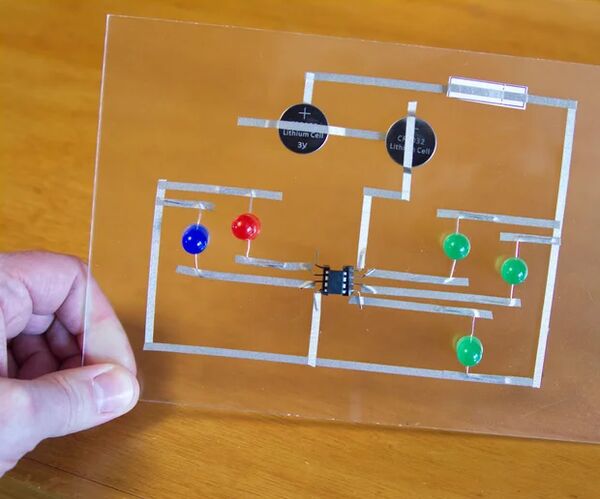
Printed Circuit Board
"Do you know what PCB stands for? It stands for "Printed Circuit Board", okay... but what is a Printed Circuit Board? We looked it up and this is what we found: "A PCB mechanically supports and electrically connects electrical or electronic components using conductive tracks". Okay, we can work with that! We're going to make a PCB using a "printed" piece of paper and a clear piece of acrylic as the "board" to build our "circuit" on. PCB!" [...]

PyonAir - an Open Source Air Pollution Monitor
"The PyonAir is a low-cost system for monitoring local air pollution levels - specifically, particulate matter. Based around the Pycom LoPy4 board and Grove-compatible hardware, the system can transmit data over both LoRa and WiFi. I undertook this project at the University of Southampton, working in a team of researchers. My primary responsibility was the design and development of the PCB. This was my first time using Eagle so it was definitely a learning experience! The aim of the PyonAir project is to deploy a network of low-cost, IoT pollution monitors that will allow us to gather crucial information about the distribution and causes of air pollution." [...]
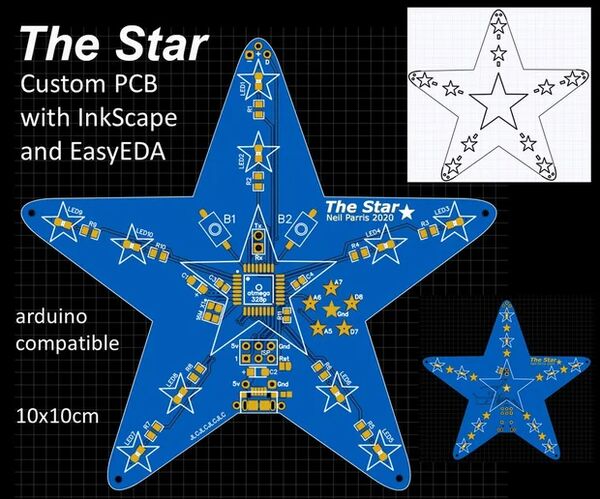
Intro - Learn How to Design a Custom Shaped PCB With EasyEDA Online Tools
"I've always wanted to design a custom PCB, and with online tools and cheap PCB prototyping it's never been easier than now! It's even possible to get the surface mount components assembled cheaply and easily in small volume to save the difficult soldering task! I've ordered 10x PCBs with assembly for less than US$50.While PCBs serve an important function, the layout of the components is an important part of how it looks. I've rotated the components on the board to align with the points of the star. This instructable will teach you: - How to draw the custom PCB shape in InkScape (free, open source graphics tool) - How to use EasyEDA circuit & PCB design tools (free and online, no install required!) - How to import the SVG into EasyEDA for custom PCB shape and silk screen - How to design a simple 'Arduino' programmable MCU design - How to use JLCPCB surface mount assembly to get the boards made & assembled Features of "The Star" - Custom 5-point star shaped PCB - Animated lighting - 10x LEDs per side, double sided - arduino programmable ATMEGA328P microctroller - 2x buttons for interactivity - you could make a simple game - micro USB powered (option) - Network multiple stars for bigger animations (option) with serial communications" [...]

Tiny Game Console
"Tiny game consoles are awesome. You can add them to your keychain and carry it all the time with you. You will find some designs on the Internet but all of them have disadvantages. I found one nice design here but the position of the buttons is not perfect. From my experience, I think placing buttons just under the display can give more comfort on playing for such a tiny console instead of placing them on the bottom-most position of the console like the mentioned one. From that thinking, I made one placing the buttons in the right place." [...]
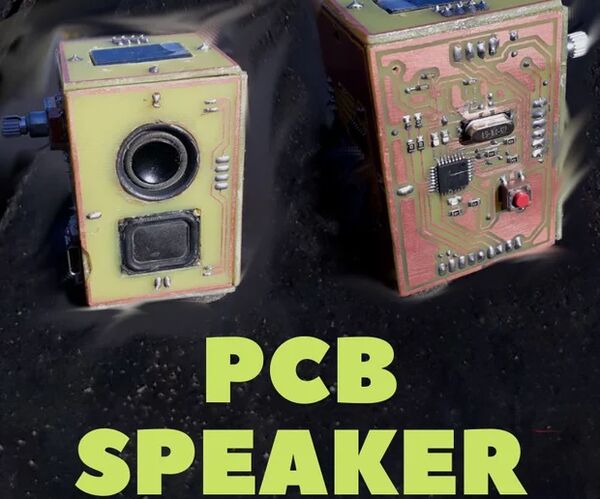
Wireless Speaker PCB
"On my desk there is always a lack of space for tools or electronic components, that's why I created a prototype of a tiny wireless speaker. The case is made of PCB, all electronic components are on top. I can listen to my favourite music on it thanks to the Bluetooth module and if I get bored of it, I turn on the radio to listen to the news. Using an encoder, I set the frequency of the FM signal and it is displayed to me on the 0.96 "OLED screen. The phone charger (USB C) is responsible for powering the speaker. " [...]
WI-Fi Controlled 4CH Relay Module for Home Automation
"I have been using a many WI-FI Based on off Switches Previously. But those are not suit with my Requirement. Thats why I wanted to build my own, which can replace normal Wall Switch sockets without any Modifications. The ESP8266 Chip is Wifi enabled IoT platform for everyone. What I have done is created a four Channel relay board for it and the coolest part is that board also has a 100-240V-AC to 5V-DC Power supply on board so you will be able to connect it directly to AC mains while creating a Wifi enabled switch board. It also has a header where you will be able to connect Tx-RX based devices (Something like a Nextion Dispalys)." [...]
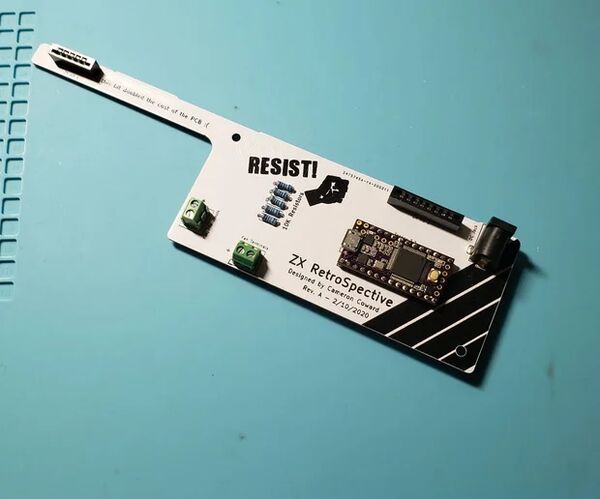
ZX Spectrum USB Adapter for Raspberry Pi RetroPie Builds
"RetroPie is a special Linux distro that is designed specifically for emulating retro video game systems on Raspberry Pis and other single-board computers. I've been wanting to go all-out on a RetroPie build for a while now, and when I saw that reproduction Sinclair ZX Spectrum were available I knew they would be perfect. It would have been simple enough to cram a Raspberry Pi into the case, but I wanted the ZX Spectrum keyboard to be functional. That's why I designed this USB keyboard adapter board. The standard ZX Spectrum keyboard ribbons plug into the adapter, and it connects to any keyboard as a standard USB keyboard. There is also a DC barrel jack to supply power to the Raspberry Pi and to an optional fan." [...]
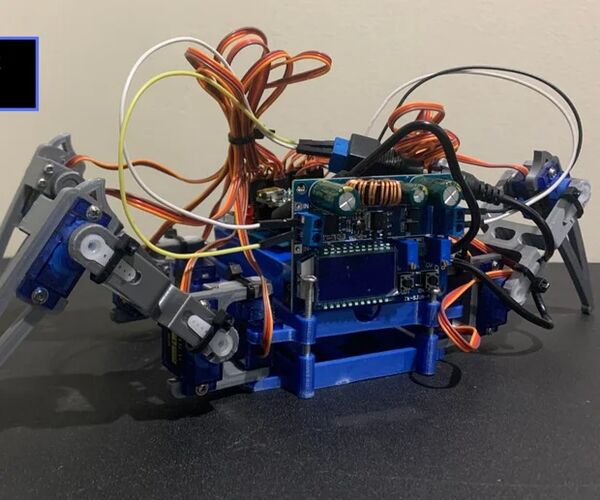
Quadruped Spider Robot - GC_MK1
"The spider robot a.k.a. GC_MK1 moves forward and backward and can also dance depending on the code loaded on the Arduino. The robot uses 12 micro servo motors (SG90); 3 for each leg. The controller used to control the servo motors is an Arduino Nano. We also use a 12V battery which is stepped down to 5V by using a DC-DC converter, and then fed to the VIN pin to power the Arduino and servo motors as well. All the parts for the body of the robot have been 3D printed." [...]

MOSTER FET - Dual 500Amp 40 Volt MOSFET 3d Printer Heated Bed Drivers
"You probably clicked on this thinking holy cow, 500 AMPS!!!!!. To be honest, the MOSFET board I designed will not be able to safely do 500Amps. It might for a short bit, just before it excitedly burst into flames. This was not designed to be a clever trick. It was NOT my evil plan to lure you into my instructable (insert mad scientist laugh here). I wanted to make a point." [...]

Particle Sniffer
"While working with the prior projects on PM2.5 assessment I noticed the drawback of being unable to locate the point sources of small particle pollution. Most sampling done by the municipalities and satellite imagery collect wide sources that don't really tell you on a personal level where this is coming from and how to eliminate it. The Honeywell device has its own blower and input and output windows all I needed was a way of channeling the airflow specifically to those areas--and of course I already had a 3D printed/designed dogs nose to put on the end so the rest was just to design a gun sampling unit with trigger that would allow me to carefully explore where my killers were coming from. " [...]
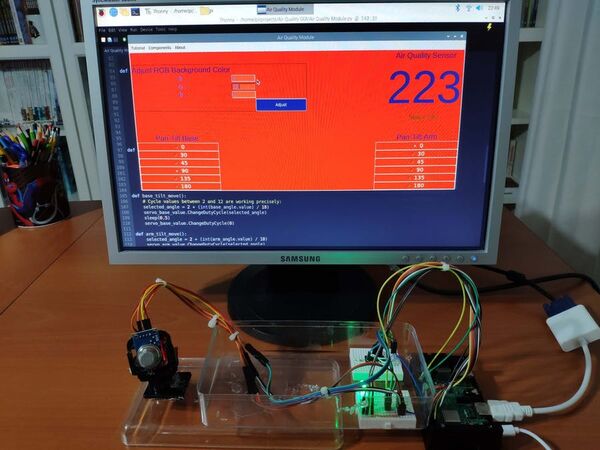
Raspberry Pi Adjustable Air Quality Detector Running on GUI
"Develop a GUI to display current air quality values as per the MQ-135 position precisely and control a mini pan-tilt kit (and RGB lighting). I had been working on a project with which I could collate air quality information from an MQ-135 Air Quality Sensor to detect the occurrence of the deteriorating air quality in my workplace. However, the positioning of the MQ-135 Air Quality Sensor has gigantic importance while collecting pristine information from the sensor. Therefore, I decided to make a moveable sensor base via selected angles by developing a user-friendly interface. To achieve that goal and add a few corroborating features such as adjustable background light, I developed a GUI using the guizero module in Python for my Raspberry Pi, named Air Quality Module. Via Air Quality Module, you can control two servo motors attached to the mini pan-tilt kit by choosing one of the given angles - 0, 30, 45, 90, 135, 180 - and adjust the background light in RGB format - 255, 255, 255." [...]
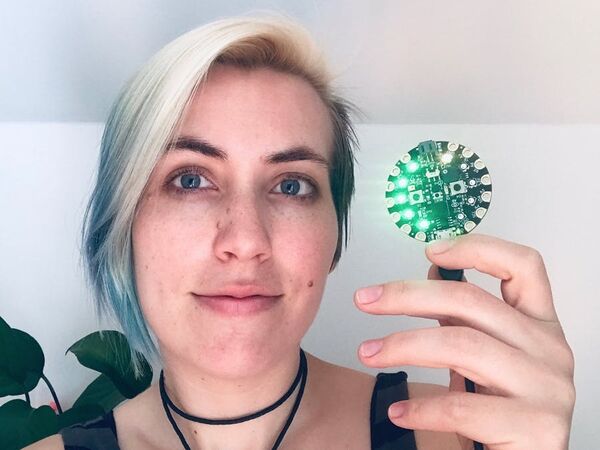
Touchless Handwashing Timer / Nightlight
"Program a cute little timer that activates when you clap your hands! Perfect for shared bathrooms. Program a touchless hand-washing timer and night light, using drag-and-drop MakeCode blocks (and/or JavaScript) with the Circuit Playground Express. This little board is fantastic for developers who are starting their hardware journey. It's packed with sensors and outputs for sound, light, motion, and more. Here, we'll use the built-in sound level sensor and ring of 10 RGB LEDs." [...]

Automatic faucet (Touchless) using Arduino - Wash hands and stay safe during COVID-19 crisis
"I hope you are all doing well and staying safe now. I will be explaining you about my prototype which I designed to wash hands safely. I made this project with limited resources. Those who are interested can remake this project, and if you like you can make some improvements too. I did not have a solenoid water valve with me, so I had to use the submersible water pump to demonstrate my project. By having an automatic faucet, you do not have to touch the surface of the faucet after you wash your hands; you can wash your hands safely and prevent coronavirus disease." [...]
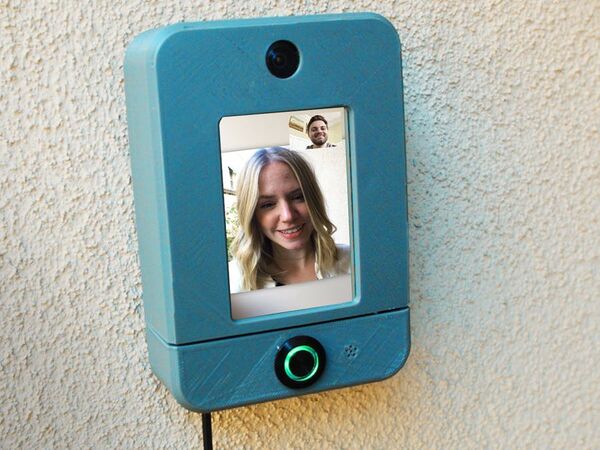
Smart Doorbell / Video Intercom System
"Raspberry Pi-powered hardware that notifies you when guests arrive and lets you talk to them on your phone through internet calls. Need another way to social distance yourself during the COVID-19 outbreak? Make this smart doorbell system so that you don't have to interact with guests at your front door. The system can also be used as smart intercom system so that you can chat through internet calls with other people in your home or office. The Raspberry Pi-powered Smart Doorbell opens a virtual meeting room for the guest when they press a button. It also sends a notification to your phone with a link to the same meeting room to chat with the guest." [...]
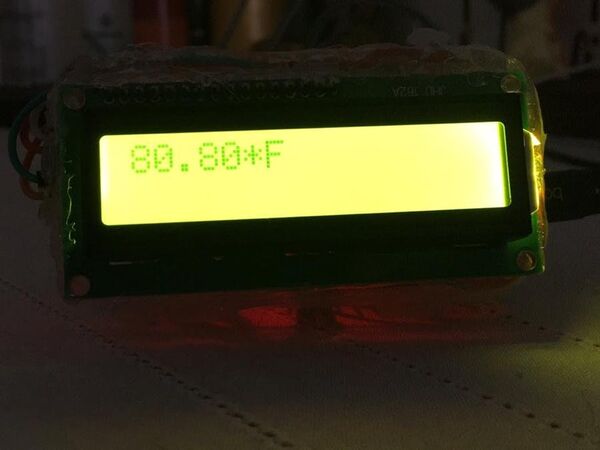
DIY IR Contact Less Thermometer an IOT device
"Necessity is the mother of invention: DIY IR Contact Less Thermometer an IOT device We are all going through a crucial junction of time due to COVID-19. We are all trying to take preventive measures to stay safe. The necessity of living safe form COVID-19 I was out for searching an IR thermal contactless thermometer for my home, to track unusual body temperature any of my housekeeping staffs, visitors or delivery agents, from long distance and without anyone standing and monitoring. I found a few devices in the amazon market place. Those are very promising products and much costly. And also there is always a person required to stand and monitor from some distance holding the device." [...]

Color Coded Clock - Colors Show the Time
"The clock I built in this project is based on a fact that has been researched for some time, namely how to choose as many colors as possible to be as different as possible visually. The area where I first encountered this problem was mapping. Maps should be really easy to read, easy to interpret and the use of appropriate colors is very important. You can find a very good implementation of an application that chooses the right colors you can find on colorbrewer. But in many other areas, choosing colors that are easy to distinguish, including by those with color blindness, is just as important: graphical representation of transport lines, metro, buses, trains, the simultaneous display in different graphs of several statistical values, results of database queries in video games, in text editors these are only a few .. There is a huge literature on this topic, I was simply lost when I started to research this aspect." [...]
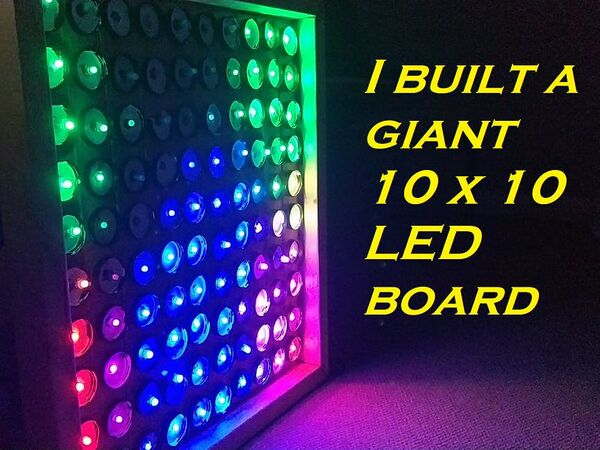
Giant LED Board
"A DIY home-made giant 10 x 10 LED board, it's bright, colourful and cool. I have been excited about LEDs for a long time and decided that I would create some sort of LED matrix or board. I bought the LEDs back in November 2019 but really struggled to get them working with the Raspberry Pi and Python code. However, thanks to Lorraine Underwood I got started, wired them up and created a short program to flash them on and off. To wire the LEDs correctly you need to check for the data arrow indicating in which direction the data flows. This is not the same across all the LED chains, I even purchased three sets of 50 from the same manufacturer and the data was different on each." [...]

DIY 3D Printed Single Digit Arduino Clock
"One Big digit , fully functional Arduino Nano clock" [...]
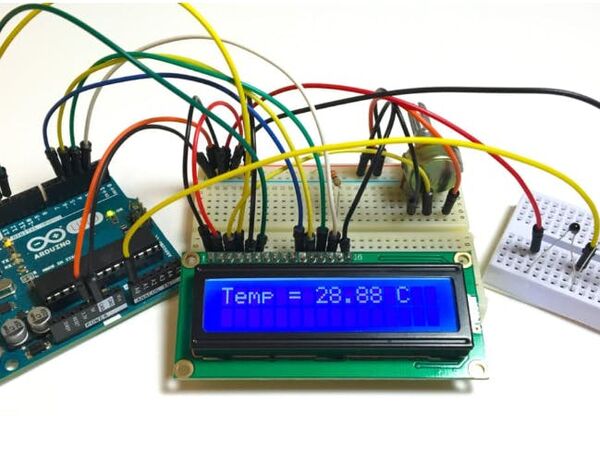
Make an Arduino Temperature Sensor (thermistor tutorial)
"Thermistors are simple, inexpensive, and accurate components that make it easy to get temperature data for your projects. Thermistors are variable resistors that change their resistance with temperature. They are classified by the way their resistance responds to temperature changes. In Negative Temperature Coefficient (NTC) thermistors, resistance decreases with an increase in temperature. In Positive Temperature Coefficient (PTC) thermistors, resistance increases with an increase in temperature. NTC thermistors are the most common, and that’s the type we’ll be using in this tutorial." [...]

RC Car Steered by Wheel and Pedals
"Life is about making your dreams come true. Mine was to make RC Car steered with PC gaming wheel. So I made it. Hope that it's going to be useful for someone. In case of questions, write a comment. To make this project you'll need: Raspberry Pi (I used RPI 4B with 4GB of RAM) Chassis with servo-steered front axle (motor and servo included) RPI Camera with 3D printed case (optional) Li-Po battery 11.1V PC wheel with pedals Polulu DRV8835 Dual Motor Kit 11.1V to 5V Buck converter Wires" [...]
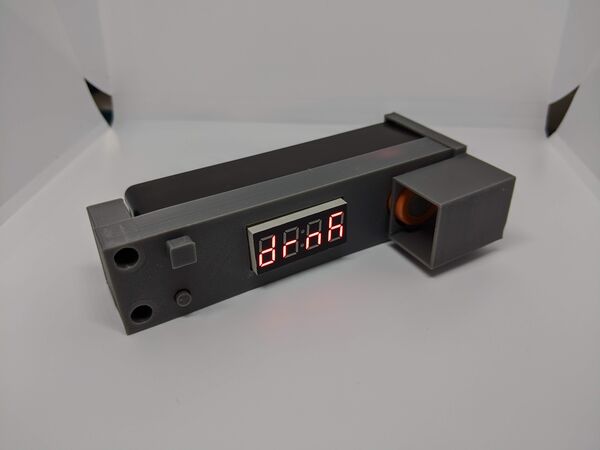
Tiny Breathalyzer
"Ok I’ll admit it I’m obsessed with making breathalyzers, I made my first one back in 2015 then I made an addon for the ElectroPet and another addon for the ZeroBootSystem. I wanted to make a slimmed down version I could take on a night out or to a beer festival. I start out designing it around a arduino pro mini but ended up using a attiny85, Join below to see how it turned out. Hardware Attiny85 sop8 Latching switch SMD button 4x 7 segment display MQ3 alcohol sensor Male USB port M3 bolts x6 Power bank Torch prototype So after doing the tiny glow stick and using the power bank as the power source It got me thinking about using it in other projects. I needed a torch for work so I used that to prototype the idea of building something around the power bank. " [...]
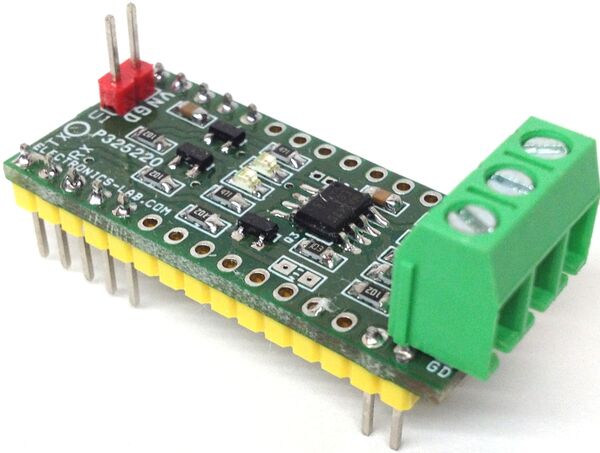
RS485 Shield For Arduino Nano
"Arduino Nano RS485 shield will help you to transmit and receive serial data using the twisted pair RS485 network. The module provides half-duplex communication. LED D1 indicates receive data, D2 Transmit LED, J1 jumper is optional and not in use in this application. DI/RE connected to D2 of Arduino digital pin which enables Receiver Output /Driver Output. CN1 connecter supply input, CN2 3 pin screw terminal helps to connected twisted pair cable. The unit can communicate over 4000 feet of 26AWG twisted-pair wire at 110 kHz into 120Ω loads." [...]
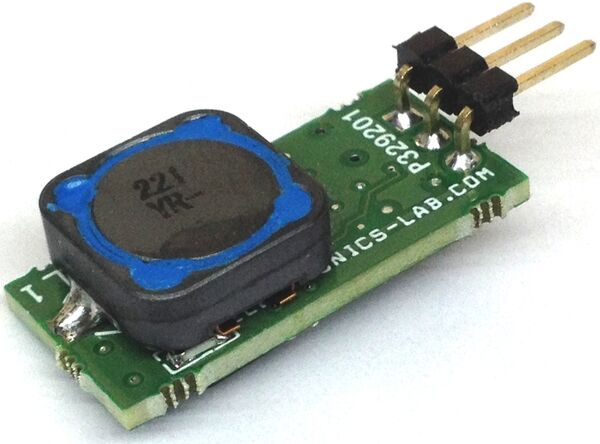
90V to 10V @ 500mA High Voltage DC-DC buck converter
"This is a versatile tiny module that provides 10V/500mA from 90V DC input. It is a high voltage input DC-DC buck converter, based on LM5017 IC, which is a 100-V, 600-mA synchronous step-down regulator with integrated high side and low side MOSFETs. The constant on-time (COT) control scheme employed in the LM5017 requires no loop compensation, provides an excellent transient response, and enables very high step-down ratios. The ON-time varies inversely with the input voltage resulting in nearly constant frequency over the input voltage range. A high voltage startup regulator provides bias power for the internal operation of the IC and for integrated gate drivers. A peak current limit circuit protects against overload conditions." [...]

Smart pH Sensor
"This pH Sensor reads the pH value of any liguid and alerts by SMS with the liquid and its pH value In chemistry, pH is a scale used to specify how acidic or basic a water-based solution is. Acidic solutions have a lower pH, while basic solutions have a higher pH. At room temperature, pure water is neither acidic nor basic and has a pH of 7. pH measurement is used in a wide variety of applications: agriculture, wastewater treatment, industrial processes, environmental monitoring, and in research and development. pH is a measure of the acidity or alkalinity of a solution.... The greater the concentration of H+ the more acidic the solution and the lower the pH. To Calculate pH and [H+]: The equilibrium equation yields the following formula for pH : pH = -log 10 [H+] [H+] = 10-pH In other words, pH is the negative log of the molar hydrogen ion concentration or the molar hydrogen ion concentration equals 10 to the power of the negative pH value." [...]
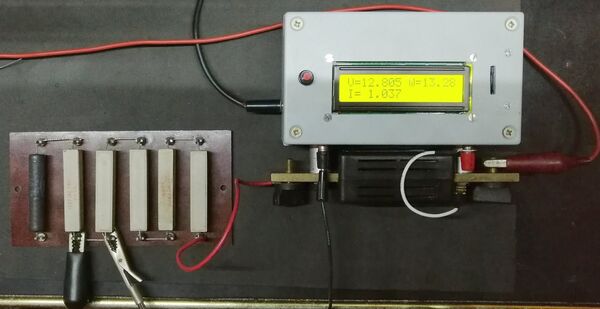
The ArduINA226 power monitor
"In the past I have developed various projects of ammeters based on Hall effect current sensors such as the ACS712, or on High-Side Current-Sense Amplifiers such as the MAX4080SASA or made with operational amplifiers. All these systems have an analog output which must then be digitized. The INA226 sensor has a digital output and incorporates a 16-bit ADC for which a high accuracy and precision is obtained. It measures current and voltage and calculates power while Arduino communicates with the chip, presents the measurements on an LCD display and stores them on a micro SD card. This chip operates with a maximum voltage of 36 volts while the current is limited only by the shunt used. There are some libraries for the INA226 chip, I used the Korneliusz Jarzebski library which seems to me quite complete even if I had to make some changes to two functions." [...]

Bareboat Necessities Projects
"This document describes a DIY project of building a marine computer, a boat LTE/WiFi gateway, and a cockpit chartplotter display from easily obtainable and affordable components. This boat electronics project includes: Waterproof marine touch screen HDMI display GNSS (GPS, GLONASS, Beidou, Galileo) receiver Sensors for orientation (gyroscope, accelerometer, compass via IMU) AIS radar Environment temperature, barometric pressure, humidity sensors Connections to the boat instruments such as wind, depth, speed, AIS via NMEA 0183 serial ports Boat LTE / 4G Gateway, network storage Boat WiFi hotspot and a router with WiFi extender and a long range waterproof WiFi antenna Optional autopilot integration, rudder angle sensor Other NMEA devices, engine/battery status, bilge pump monitoring, etc Optional air mouse with a wireless keyboard and a touchpad Lightning EMI sensor and alarm RTL-SDR for weather fax, NavTex, satellite weather, AIS, RTL 433, morse code decoder, etc Boat IoT Integration via MQTT Music Player Can be used with Iridium Satellite Modems Can be used for processing transmissions received from SSB radio via audio interface Variety of options of using wireless handheld devices such as smart phones and tablets to connect to boat systems via WiFi and bluetooth. There are many marine applications available for smart phones and tablets. The boat computer is connected to the waterproof HDMI touchscreen in the cockpit. " [...]
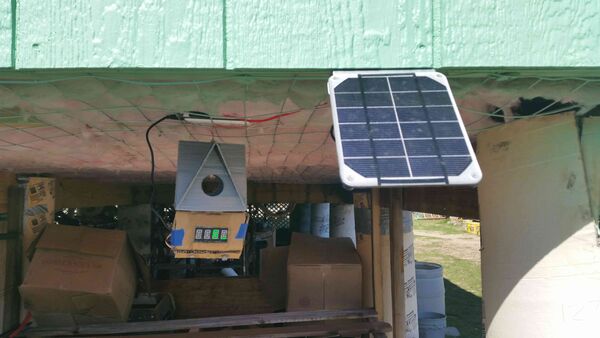
Birdhouse with Solar-Powered Weather Station
"This project uses 3D printing, a temperature and humidity sensor, and solar power to make a birdhouse with a simple weather station attached. " [...]
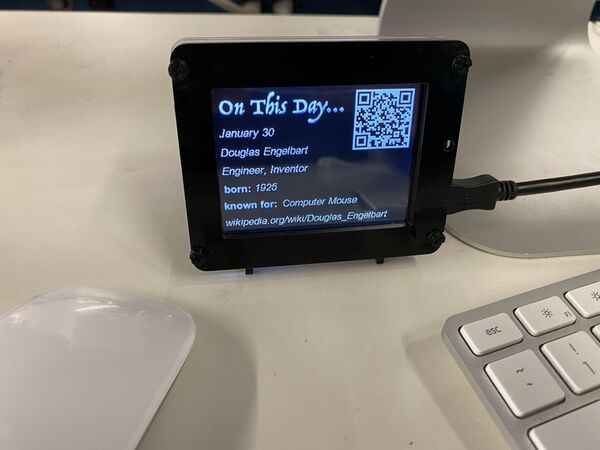
Electronic History of the Day with PyPortal
"This PyPortal project shows one notable electronic or science fact every day. Based on what day it is, CircuitPython code grabs JSON data from a database and then prints information about the person associated with that day. Want more info on the person? Use the QR code! We created our very own database with data on the most memorable electronics and sciencey peoples. The CircuitPython code grabs from this database to bring you all these great factoids!" [...]
That's all Folks!



